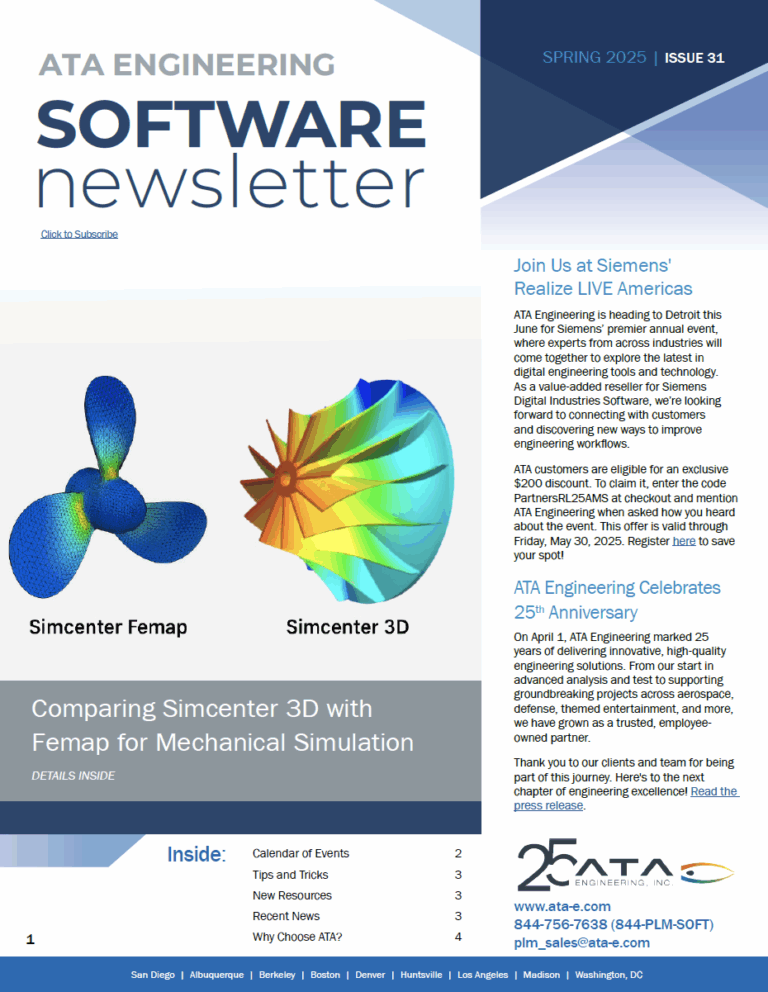The analysis of mechanisms presents many unique challenges, including the need to accurately model multibody interaction via joints, bearings, contact, gear systems, and other constraints. Kinematic analysis is a critical element in understanding mechanism performance and loads, as are strength and structural dynamics assessments, which generally depend on mechanism configuration. Flexible multibody systems, such as deployable antennas and solar arrays, are especially challenging systems to model because they require both the articulating ability of kinematic joints and the flexible member which may include significant nonlinearity.
Through experience in a number of industries, ATA has gained exposure to a wide variety of applications for multibody dynamics (MBD) and has found that the commonly used rigid-body assumption is extremely limiting. ATA has experience incorporating flexible components and joints using linear, modes-based, and nonlinear representations, as well as material nonlinearities and contact, into MBD simulations to more accurately simulate dynamic responses. A small sampling of ATA’s experience in diverse applications is highlighted below:
- Launch vehicle separation and jettison
- Spacecraft landing
- Animatronics
- Amusement park motion simulators
- Vehicle suspension systems
- Dynamic response of robotic manipulators

Some structures, such as aerospace antennas and solar arrays, undergo gross motion and drastic configuration changes during their deployment and stowing. Due to high cost and difficulty of testing these very light space-bound components on Earth, the development process typically relies heavily on analysis. ATA has unique experience simulating the deployment and stowing of deployable structures while accounting for large articulations, geometric nonlinearities, and contact. ATA has developed expertise performing these challenging simulations using a nontraditional application of a commercially available finite element code and has even built a custom analysis tool, Rapid Analysis and Parametric Integrated Design (RAPID), which performs parameterized design explorations to quickly explore design architectures.

FEATURED Technical Paper
Rapid Parametric Analysis and Design of Space-Based Solar Arrays
FEATURED Technical Paper
Time Accurate Aeroelastic Simulation of Flap Deployment with Free Play
FEATURED Technical Paper
Using Abaqus to Enable Accurate Stress Predictions of a Multi-Body System with Sliding Contact
Connect with us to discuss how our advanced multi-disciplinary team can help you achieve your engineering goals.











